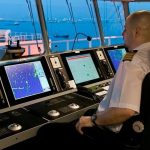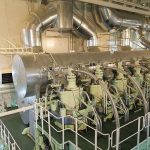100. Prior to taking over the engineering watch, the relieving officer shall be informed by the officer in charge of the engineering watch as to:
.1 the standing orders of the day, any special orders relating to the ship operations, maintenance functions, repairs to the ship’s machinery or control equipment;
.2 the nature of all work being performed on machinery and systems on board ship, personnel involved and potential hazards;
.3 the level and condition, where applicable, of water or residue in bilges, ballast tanks, slop tanks, sewage tanks, reserve tanks and special requirements for the use or disposal of the contents thereof;
.4 any special requirements relating to sanitary system disposals;
.5 the condition and state of readiness of portable fire-extinguishing equipment and fixed fire-extinguishing installations and fire-detection systems;
.6 authorized repair personnel on board engaged in engineering activities, their work locations and repair functions and other authorized persons on board and the required crew;
.7 any port regulations pertaining to ship effluents, fire-fighting requirements and ship readiness, particularly during potential bad weather conditions;
.8 the lines of communication available between the ship and shore personnel, including port authorities, in the event of an emergency arising or assistance being required;
.9 any other circumstance of importance to the safety of the ship, its crew, cargo or the protection of the environment from pollution; and
.10 the procedures for notifying the appropriate authority of environmental pollution resulting from engineering activities.
101. Relieving officers, before assuming charge of the engineering watch, shall satisfy themselves that they are fully informed by the officer being relieved, as outlined above; and:
.1 be familiar with existing and potential sources of power, heat and lighting and their distribution;
.2 know the availability and condition of ship’s fuel, lubricants and all water supplies; and
.3 be ready to prepare the ship and its machinery, as far as is possible, for stand-by or emergency conditions as required.


